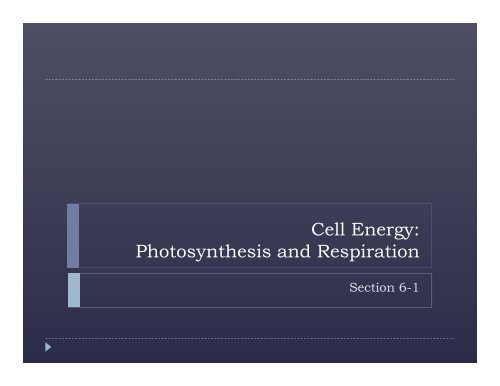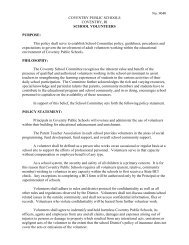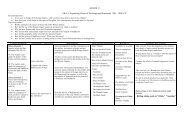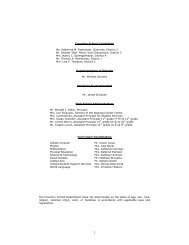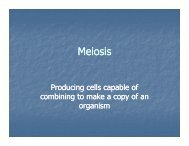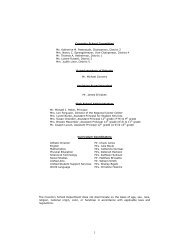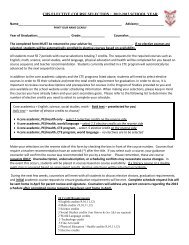Cell Energy: Photosynthesis and Respiration
Cell Energy: Photosynthesis and Respiration
Cell Energy: Photosynthesis and Respiration
Create successful ePaper yourself
Turn your PDF publications into a flip-book with our unique Google optimized e-Paper software.
<strong>Cell</strong> <strong>Energy</strong>:<br />
<strong>Photosynthesis</strong> <strong>and</strong> <strong>Respiration</strong><br />
Section 6-1
<strong>Photosynthesis</strong>:<br />
Capturing <strong>and</strong> Converting <strong>Energy</strong><br />
<strong>Energy</strong> is the ability to do work<br />
Potential vs. Kinetic<br />
Point of Reference<br />
How do living things capture, convert, store <strong>and</strong> use energy?<br />
Main source of energy for ALL living things is the SUN!<br />
<strong>Photosynthesis</strong><br />
The process where plants convert the electrical energy of<br />
sunlight into chemical energy.<br />
This energy is stored in the chemical bonds of carbohydrates:<br />
Sugars <strong>and</strong> starches
Timeline of Discoveries<br />
1600’s - Jan Van Helmont measured the mass of soil <strong>and</strong> a<br />
tree; he then grew the tree for five years <strong>and</strong> measured<br />
the masses again.<br />
The soil stayed the same while the tree increased about 75 Kg.<br />
He concluded that most of the mass increase came from the<br />
water that he added.<br />
1700’s - Joseph Priestly discovered that oxygen is<br />
produced by plants.<br />
Jan Ingenhousz - showed that oxygen is only produced<br />
when the plant is exposed to sunlight.
Requirements for <strong>Photosynthesis</strong><br />
Chemical equation for photosynthesis:<br />
Reactants ——› Products<br />
Carbon Dioxide + Water ——› Glucose + Oxygen<br />
Unbalanced<br />
CO 2 + H 2 O ——› C 6 H 12 O 6 + O 2<br />
Light<br />
Balanced ??<br />
__CO 2 + __ H 2 O ——› C 6 H 12 O 6 + __ O 2<br />
Light
Sunlight<br />
Nearly all organisms on Earth depend on the Sun for<br />
energy.<br />
Those that directly use the Sun’s energy are called:<br />
Autotrophs; producers<br />
Those organisms that can not use the Sun’s<br />
energy directly must get their energy from<br />
producers. They are called:<br />
Heterotrophs : consumers
Visible light spectrum
Pigments<br />
Chlorophyll absorbs red <strong>and</strong> blue light
<strong>Energy</strong> Storing Compounds<br />
Two ways this energy is trapped in plants.<br />
1. As Sunlight strikes a leaf, the energy in the light excites<br />
a pair of electrons. These electrons are passed directly<br />
to an electron carrier [NADP+], which is then<br />
converted into [NADPH]. This process converts<br />
electrical energy into chemical energy.
Second Way<br />
2. Store the chemical energy in the bonds of ATP.<br />
<br />
<br />
Adenosine Triphosphate<br />
Made of Adenine, ribose [5 carbon sugar] <strong>and</strong> three phosphate groups
Storing <strong>Energy</strong><br />
A molecule of AMP [Adenosine Monophosphate] attaches a<br />
second phosphate group the bond stores energy <strong>and</strong> the<br />
molecule becomes ADP [Adenosine Diphosphate].<br />
What happens when a third phosphate group is attached?<br />
ATP [Adenosine Triphosphate]<br />
One muscle cell can consume <strong>and</strong> regenerate over 10,000,000<br />
ATP's a second.<br />
If ATP couldn't be regenerated, humans would have to consume<br />
nearly their body weight in ATP each day.


